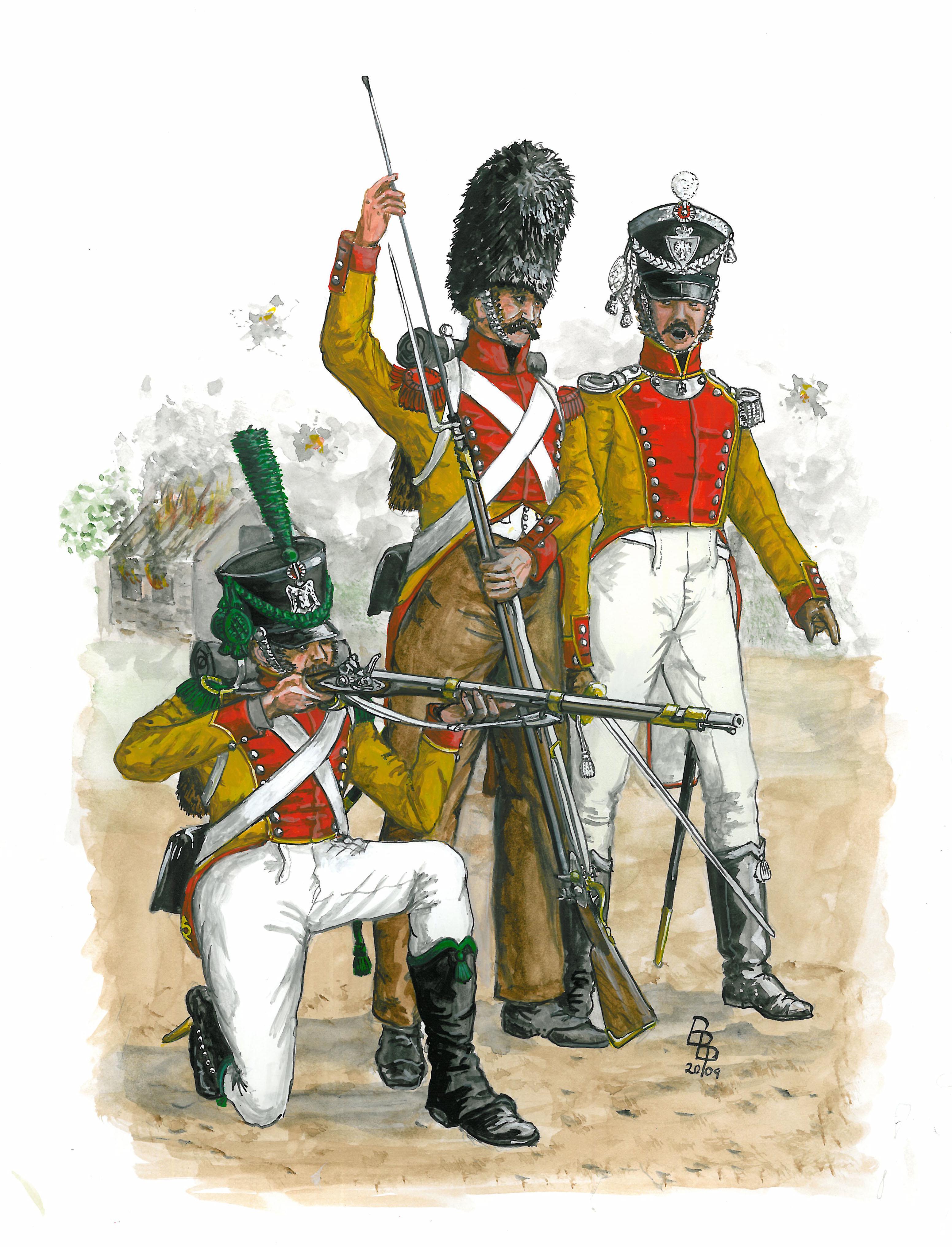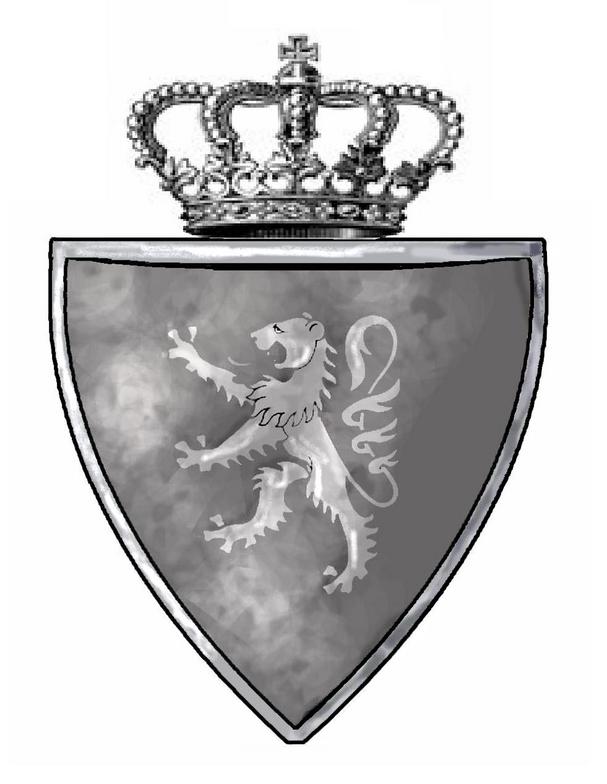FRANCE
The Prince of Neufchâtel’s Battalion
1807-1815
Left: Man of Voltigeur Company – Germany 1813
Center: Grenadier (or Carabinier) – Spain 1811
Right: Lieutenant of Fusiliers – Russia 1812
The Shako plate worn by members
Of the Fusilier Companies until 1813
This unit was raised on May 11th, 1807 on the orders of the newly minted Prince of Neuchâtel, Marshal Louis Berthier, in response to a request from his Emperor. Neufchâtel, a Prussian enclave in Switzerland, was ceded to Napoleon in 1806. The battalion saw some fighting at Wagram in 1809 and was transferred to Spain the following year. It did some hard work against the Spanish guerrillas and saw action against the British at Aldea de la Ponte in 1811. It was ordered to Russia in 1812 but by the time it reached Smolensk, with a strength of 661 officers and men, the Grande Armee was already in retreat. The battalion saw heavy fighting all the way to the Berezina and only one officer and seven men survived the campaign. Reconstituted in 1813 it took part in the retreat from Leipzig and although a few men fought in France, it had virtually ceased to exist by the spring of 1814.
The battalion is well known for its unique uniforms. Controversy has always surrounded the actual shade of yellow and eyewitnesses have described every color from brown to orange. They were often called ‘The Canaries’ with reason, so this artist has chosen the most accepted color of ‘chamois’ yellow. The illustration shows the uniforms from 1810 to 1814. Note the ‘habit-veste’ of the grenadier in the center and the newer cut of the coatee from 1812. Grenadiers were wearing shakos with red cords and tassels after 1813.
The above illustration was chosen for the cover of
Warfare in the Age of Napoleon
By Tod Kershner
Published in the U.S. by On Military Matters 2009.








